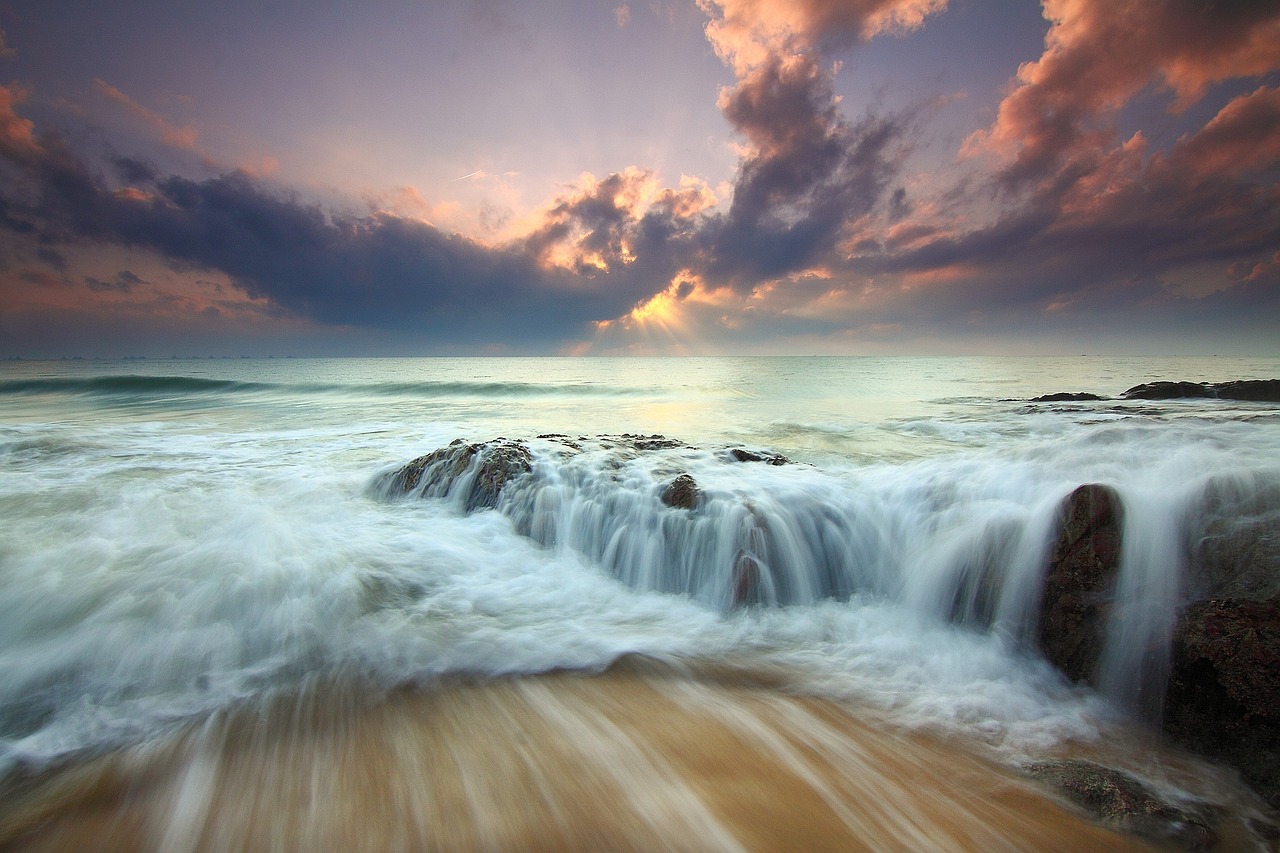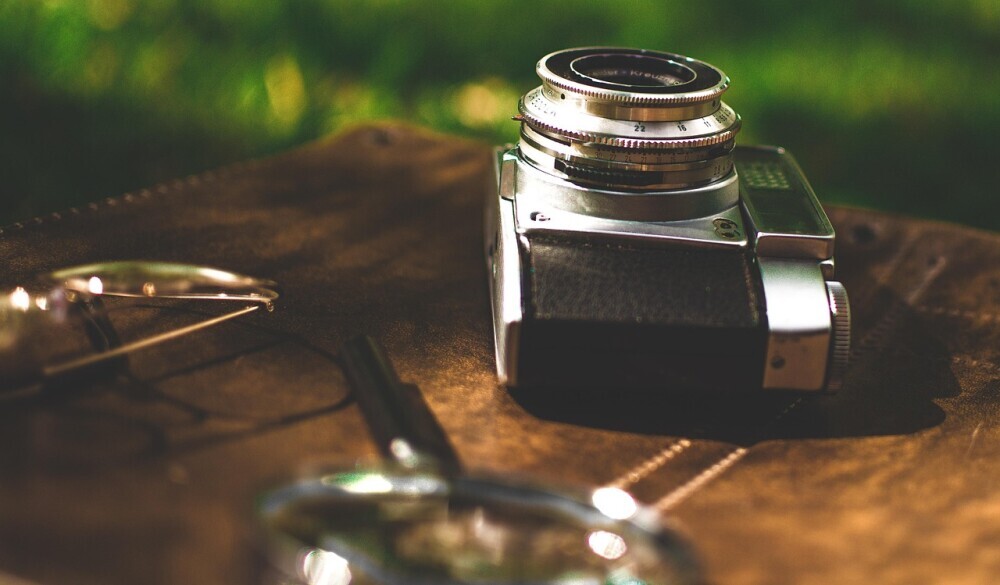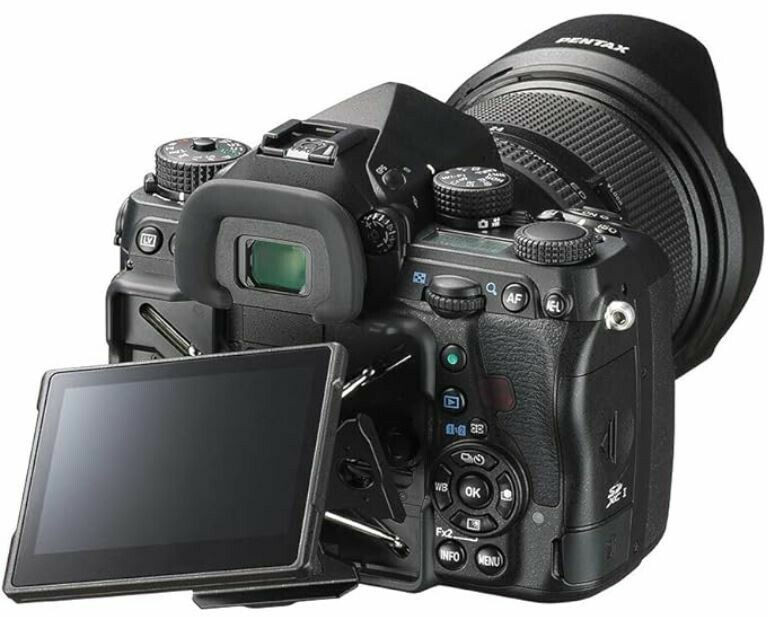I’m going to guide you through the world of long exposure photography. This isn’t just about snapping a photo; it’s a technique where time plays a lead role on your camera’s sensor stage.
You’re going to find out about how, with a simple tweak of settings, you can stretch seconds into minutes to create images brimming with movement and life.
You might have seen images where waterfalls look like flowing veils or where night skies turn into cosmic carousels of stars. That’s the power of long exposure; it allows us to visualize time in a way our eyes can’t naturally perceive.
Essentially, by letting your camera’s shutter stay open for a longer period, you capture a series of moments in one frame, creating a visual story that showcases movement in a static image.
These techniques are as diverse as they are fascinating. You can smooth out choppy seas, create ghostly images of people moving, or light-paint with fireflies in a field at twilight. Each of these scenarios is an opportunity to explore and push the limits of what your camera can record.
Long exposure photography is about finding harmony between your artistic vision and the patience required to achieve it. And when the two align just right, the result is nothing short of magical.
Now that you’ve gotten a sense of the magic you can create with long exposure, let’s make sure you’ve got the right tools for the job. In the next section, I’ll break down the essential gear that’ll help turn your long exposure aspirations into stunning realities.

Mastering the Craft: Essential Gear for Long Exposure Shots
Starting with long exposure photography, you’re going to need more than just any camera; you’ll want to ensure your kit is up to the task. Navigating the sea of camera options and camera modes can be daunting, but I’m here to help you focus on features that matter for long exposure work.
A camera with manual mode is crucial, allowing you to take control of shutter speed, aperture, and ISO settings. DSLRs and mirrorless systems are top picks due to their flexibility and quality.
Now, if there’s one thing I can’t stress enough, it’s the importance of a sturdy tripod. Long exposure photography and camera shake are archenemies.
A good tripod will be your trusty sidekick, helping you eliminate unwanted blur and keeping your shots sharp and steady.

Let’s talk about filters, particularly neutral density (ND) filters. These filters are like sunglasses for your camera, cutting down the light that enters your lens and allowing you to use longer shutter speeds without overexposing your shot, even in broad daylight.
You might also want to add a few more items to your kit. Remote shutters and cable releases prevent camera shake when pressing the button.
Some photographers also vouch for lens hoods to prevent lens flare and extra batteries, especially for those extended photo sessions.
And if you’re worried about breaking the bank, don’t. I’m a firm believer that you should choose something that resonates with you and what you can afford.
You can always start with the gear you have and upgrade it down the road. After all, the photographer’s vision and understanding of the technique are what truly matter.
Technique in Focus: Steps to Perfecting Long Exposure Shots
I’m going to walk you through the steps to get that ethereal look with your long exposure shots. First up, it’s choosing your battlefield, that is, the right time and location.
For long exposures, this isn’t just about great scenery; think about how the scene will transform over time. Does the water ripple in a way that would look silky over several seconds? Will car headlights trace a path through your frame during a night shoot?

Now, let’s talk camera settings. You’re going to want to switch your camera to manual mode. Here, you can adjust the ISO, aperture, and shutter speed – the key ingredients for your shot.
Keep the ISO low to reduce noise, and remember, your aperture isn’t just about exposure; it’s also controlling the depth of field.
As for shutter speed, this is your main playground in long exposure photography. Be ready to experiment with different durations to see what gives the best effect for your scene.
Using a cable release or your camera’s timer can make a huge difference. These tools prevent camera shake when you’re hitting that shutter button, which is crucial when your camera is exposed to the scene for more than a split second.
Composition is king, even with long exposures. Think about leading lines, framing, and what elements will stay sharp versus those that will blur.
Good composition can turn a basic long exposure into a captivating image. Play around with different angles and perspectives to make your photos stand out.
If you run into issues like overexposure, don’t worry too much. You can always learn from these challenges. Maybe it’s the time of day, or perhaps you need a stronger neutral density filter. Every problem has a solution, and that’s part of the fun.
You’re at the point where you’ve captured your long exposures, and it’s time to bring them into the realm of post-processing. This ensures your vision fully comes to life.
Fine-tuning exposure, white balance, and colors is just the start. Stick around as I show you how to elevate your long exposure photos from good to breathtaking in the next section.
From Vision to Reality: Post-Processing and Presentation Tips
Post-processing isn’t just about tweaking – it’s about fulfilling the promise of your long exposure vision. It’s where, after the shoot, your craftsmanship continues to shine.
I’m going to walk you through some key steps to ensure your long exposure shots don’t just look good on camera but also captivate viewers once they hit the screen or print.
Begin with the basics: adjust exposure and color balance to reflect the scene as you remember it or to bring out the mood you’re aiming for.
If you’re really into fine-tuning details, consider diving into noise reduction to keep those silky smooth areas flawless.
For the more adventurous, blending exposures can create a final image with a dynamic range that’s hard to capture in a single shot. This includes layering various elements shot at different times to craft a composite that’s visually stunning yet cohesive.
Striking the right balance between natural and dramatic is a creative decision. Some purists aim to preserve the scene’s integrity, while others embrace an artistic license to intensify the drama. Choose something that resonates with you and your audience.
When sharing your images, remember the platform. Instagram might love punchy, eye-catching edits, while a gallery print might command a subtler touch.
And when printing, consider the paper type and finish, as these can dramatically affect the image’s impact.
Finally, let’s talk ethics. Altering images through post-processing is widely accepted, but there’s a thin line between enhancement and deceit.
Be transparent about your process and maintain the trust of your viewers by keeping things real – or clearly stating when you’ve crossed into the territory of digital art.
Remember, you can always refine your approach as you grow. I really hope that you enjoy this journey into the world of long exposure photography, and I can’t wait to see the moments you choose to stretch into infinity!





Greetings, Randi!
I just finished reading your article on long exposure photography techniques, and I must say, it’s both a refreshing reminder and a tremendous source of inspiration. As an amateur photographer myself, I often get wrapped up in daily life and temporarily forget my love for the hobby. Your article has wonderfully rekindled that passion.
The techniques and tips you’ve shared are not only informative but also incredibly motivating. Long exposure photography has always intrigued me, especially with its unique ability to capture time in such a mesmerizing way. Your explanations make the process seem more accessible and exciting.
Thank you for sharing your knowledge and reigniting my enthusiasm for photography. It’s articles like these that remind us why we pursue our creative interests. I’m eager to dust off my camera and delve into long exposure photography more seriously.
I’m particularly curious – have you ever had the opportunity to photograph the Aurora Borealis (The Northern Lights)? I find these to be some of the most captivating shots. We get a splendid view of them here in the Shetland Islands from time to time, and it’s truly B E A U T I F U L. Venturing out in the middle of the night to capture them is always worth it for me. Can’t wait to head out and see what magical moments I can capture next!
Warm Regards,
Danny
Hi Danny! Thank you for taking the time to read my article. I am thrilled to hear that you show a similar passion for photography. I completely understand about getting caught up in daily life and placing things on hold. To answer your question, the Northern Lights shot is on the bucket list! 🙂 I believe you when you say they are beautiful! Thank you for your response!